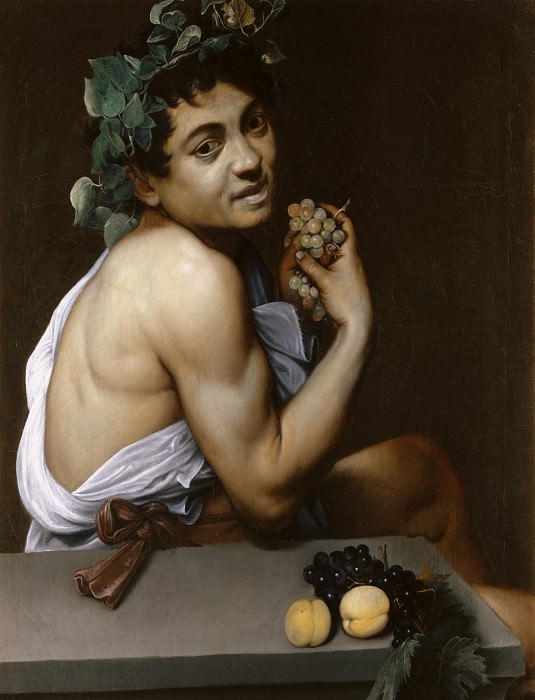Young Sick Bacchus Michelangelo Merisi da Caravaggio (1571-1610)
Michelangelo Merisi da Caravaggio – Young Sick Bacchus
Edit attribution
Download full size: 3458×4529 px (3,0 Mb)
Painter: Michelangelo Merisi da Caravaggio
Location: Borghese gallery, Rome (Galleria Borghese).
"The Sick Bacchus" is an early work by the Italian Baroque master Caravaggio, painted in 1593. Executed in the genre of mythological painting, it was a reflection of the artist’s reflections on the weakness of human life. The drama of Caravaggio’s work, characteristic of his later works, first appeared in this painting. After a long stay in hospital and leaving his room, the painter, who had not yet fully recovered, took out a blank canvas under the influence of inspiration and set to work.
Description of Michelangelo Merisi da Caravaggio’s painting The Sick Bacchus
"The Sick Bacchus" is an early work by the Italian Baroque master Caravaggio, painted in 1593. Executed in the genre of mythological painting, it was a reflection of the artist’s reflections on the weakness of human life. The drama of Caravaggio’s work, characteristic of his later works, first appeared in this painting.
After a long stay in hospital and leaving his room, the painter, who had not yet fully recovered, took out a blank canvas under the influence of inspiration and set to work. At that time he was strapped for cash, so he had to do without a sitter.
The master painted his self-portrait in the image of the ancient Greek character Bacchus: lifeless extinguished look, pale yellowish skin, weak hands holding a bunch of already rotting grapes.
Bacchus is one of the names of the mythological Dionysus, deity of winemaking and vegetation in general, as well as of inspiration. Caravaggio’s head is not enwrapped in the traditional wreath of vine leaves, but in the withered leaves of an unknown species of tree.
The healthy, handsome, flowering god of wine with the Greeks becomes unremarkable, ostensibly serious and sickly with the Italian. The real Bacchus, according to legend, wears a tan like all the inhabitants of the divine Olympus, and the character on the canvas has no bronze patina on his skin at all.
The artist seems to mock at his own temporary ugliness and powerlessness, at the earthly nature of people, and at the same time, at the lofty ideals of the Renaissance.
The impeccably drawn fruits of black and white grapes with a couple of ripe peaches give Caravaggio away as a brilliant painter of still life. The hand of the master is easily recognized by the clearly expressed contrasts in the painting, emotionality, plasticity and conciseness.
Today, the masterpiece "The Sick Bacchus" is in the Borghese Gallery in the painter’s homeland.
Кому понравилось
Пожалуйста, подождите
На эту операцию может потребоваться несколько секунд.
Информация появится в новом окне,
если открытие новых окон не запрещено в настройках вашего браузера.
You need to login
Для работы с коллекциями – пожалуйста, войдите в аккаунт (open in new window).




















COMMENTS: 3 Ответы
клод моне велик стогами, а караводжио живостью глаз
С детства эта картина меня завораживает
Больной больного для боли больных. Но со вкусами не спорю, просто удивляюсь.
You cannot comment Why?